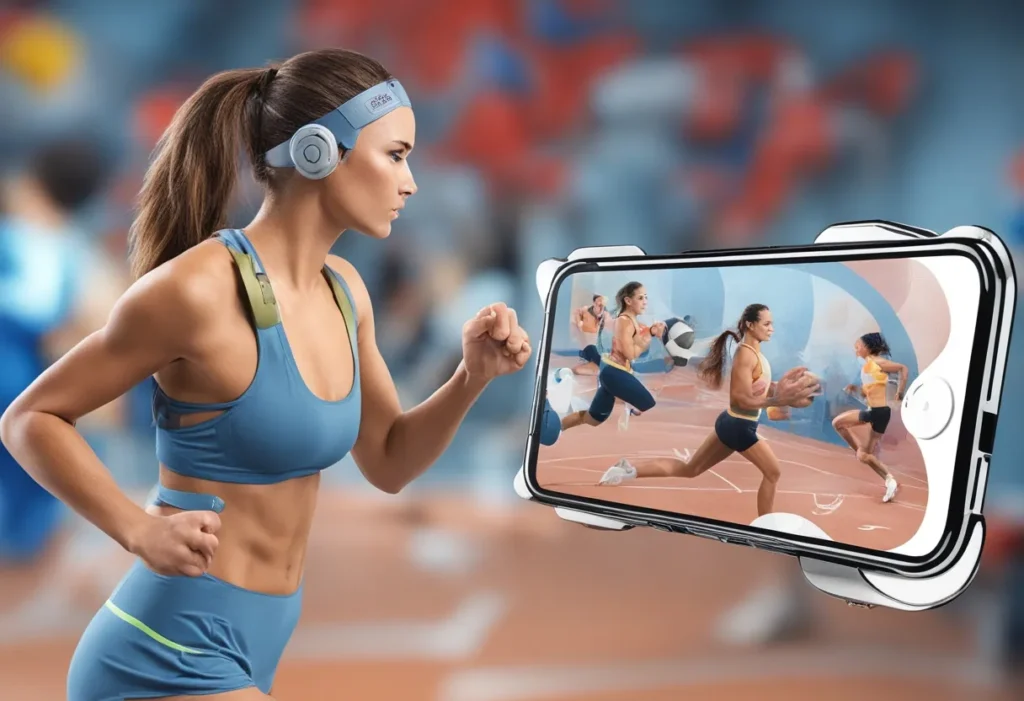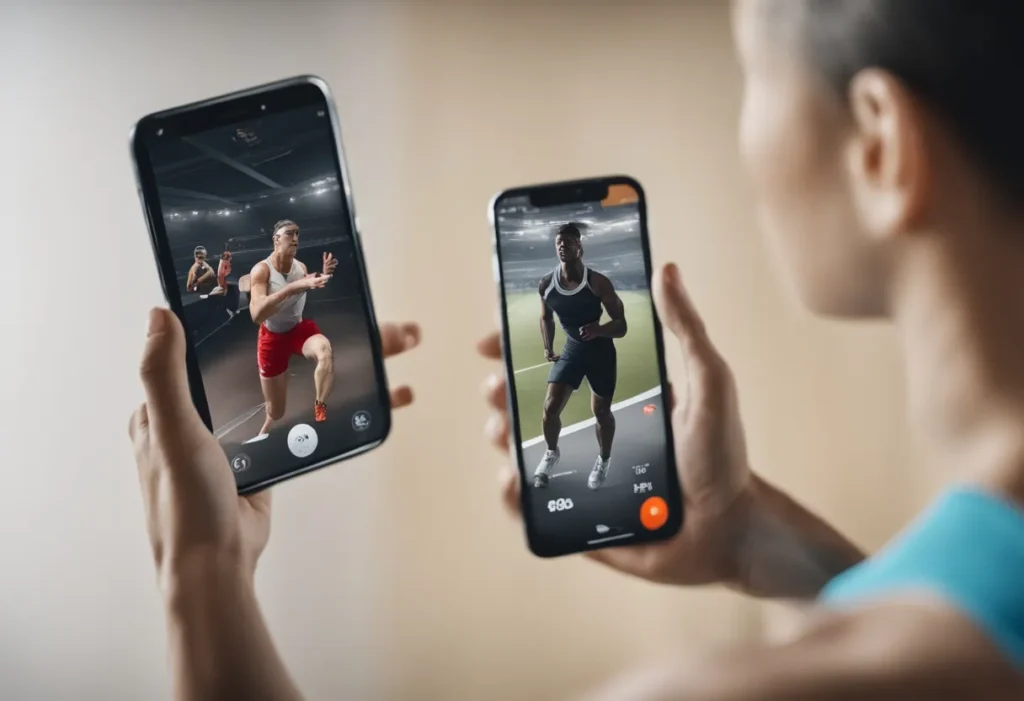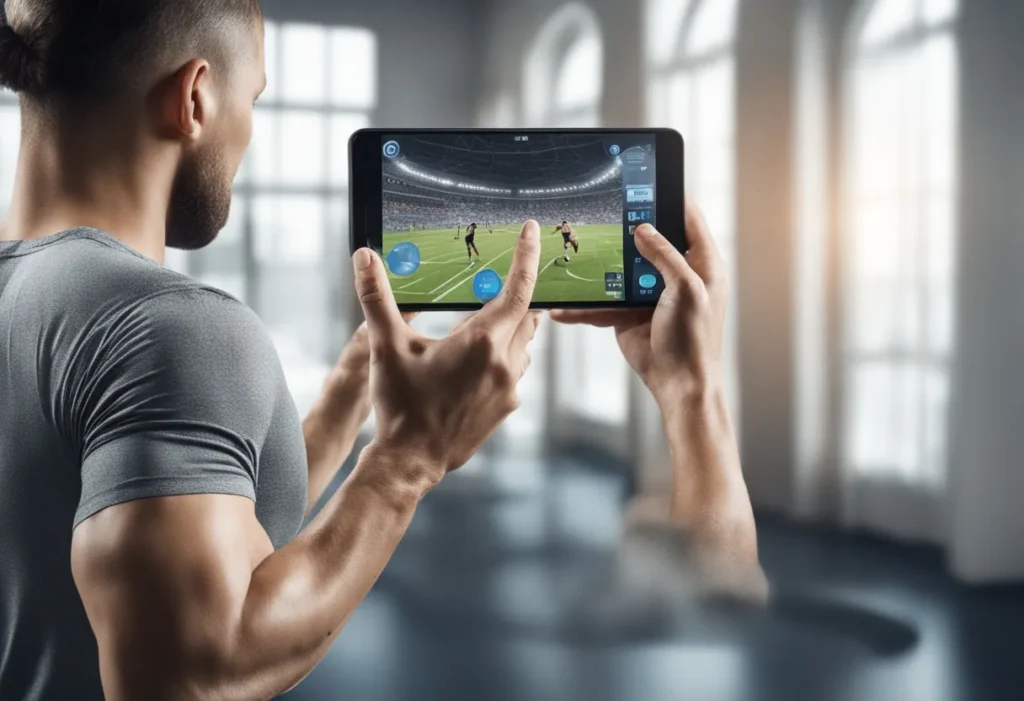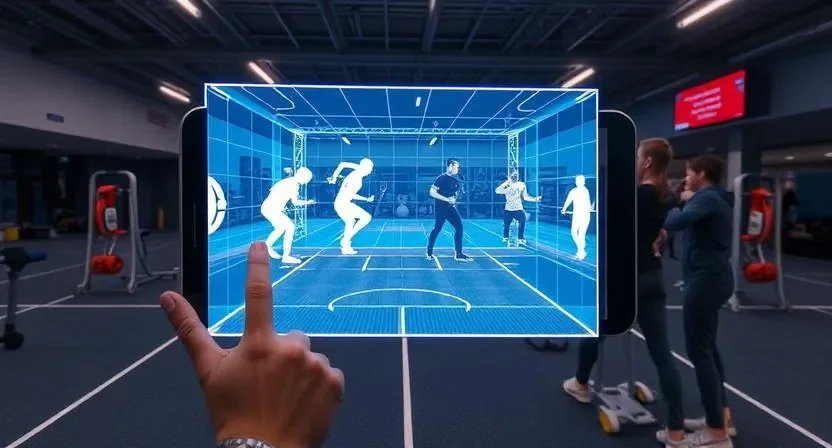AR in sports and fitness is flipping the game on its head.
I’m not here to bore you with tech jargon.
I’m here to show you how augmented reality (AR) is making workouts and sports, and even how we watch them, epically.
Struggling to stay motivated for your gym sessions?
Wondering how pro athletes are using AR to crush it?
Or maybe you’re curious about how AR makes sports on TV feel like you’re on the field?
Let’s dive into why AR in sports and fitness is the tool you didn’t know you needed.

What’s AR in Sports and Fitness All About?
AR overlays digital info onto the real world.
Think holograms, live stats, or virtual coaches popping up while you train or watch a match.
It’s not sci-fi-it’s here, and it’s changing how we move and spectate.
From AR-powered workout apps that gamify your run to AR-enhanced sports broadcasting that puts you in the action, AR in sports and fitness is practical and badass.
I’ve tried AR apps for running, and seeing a virtual pace-setter sprinting ahead of me?
It’s a kick up the backside to push harder.
Why Should You Care?
Most of us struggle to stay motivated.
AR makes exercise and sports feel like a game.
It’s not just for gym buffs or pro athletes – it’s for anyone who wants fun workouts, better performance, or an immersive way to enjoy sports.
Plus, it’s a game-changer for coaches, teams, and broadcasters who want real-time insights or to hook fans like never before.

AR-Powered Workout and Fitness Apps
AR-powered workout and fitness apps are changing how we exercise.
They turn boring routines into adventures.
Here’s what they bring to the table:
- Gamification: Apps like Zombies, Run! (zombiesrungame.com) make you the hero of a zombie apocalypse.
You’re running to escape, not just logging miles.
It’s so fun you forget you’re sweating. - Real-Time Feedback: Gymnotize (gymnotize.com) uses AR to show 3D animations of proper weight-lifting form.
I tried it for squats, and the avatar corrected my knee position instantly.
No more guessing if you’re doing it wrong. - Virtual Coaches: FitXR (fitxr.com) brings a digital trainer to your living room.
It’s like having a personal trainer without the $65-an-hour price tag. - Custom Workouts: Kayyo (kayyo.app) is an AI-powered MMA trainer that tracks your punches and kicks, giving tips to improve.
It’s perfect for home workouts.
Free Tools to Get Started
You don’t need to break the bank to try AR-powered workout apps.
Here are some free or affordable options:
- Zombies, Run! (Free with in-app purchases, zombiesrungame.com): Immersive running stories.
- Nike Training Club (Free, nike.com): Offers AR-guided workouts with certified instructors.
- Google Lens (Free, lens.google.com): Scan gym equipment for AR exercise tips.

AR-Enhanced Sports Broadcasting
AR-enhanced sports broadcasting is making TV feel like you’re in the stadium.
It overlays real-time stats, replays, and visuals onto the live feed.
Here’s how it’s levelling up the fan experience:
- Live Stats Overlays: Point your phone at the field with apps like AR Sports Broadcast and see player stats or ball trajectories.
I watched a football match with this, and seeing pass completion rates pop up was unreal. - 3D Replays: Broadcasters like ESPN use AR to show 3D replays on the studio floor.
You can study a goal from every angle, like you’re the ref.
Viewer engagement is up 15% because of this. - Interactive Fan Tools: Apps let you bet on live odds or predict plays through AR overlays.
It’s like you’re part of the game. - Hawk-Eye Technology: Used in tennis and cricket, it shows precise ball paths, making calls crystal clear.
No more yelling at the umpire.
Example: Football Broadcasting
During Monday Night Football, ESPN uses AR to overlay tactical formations and player stats.
I saw them break down a quarterback’s decision in real-time with virtual lines showing his options.
It made me understand the game on a deeper level.
Fox Sports and Sky Sports are doing similar things, boosting viewer retention by 20%.

AR for Training and Performance Analysis
AR for training and performance analysis is a godsend for athletes and coaches.
It’s like having a supercomputer analyse your every move.
Here’s how it’s used:
- Real-Time Metrics: Solos Smart Glasses (solos.com) show cyclists their heart rate, speed, and distance without looking down.
Team USA cyclists used these in 2016 and bagged silver medals. - Form Correction: HomeCourt (homecourt.ai), an NBA partner, tracks basketball shots and suggests tweaks.
A mate’s jump shot improved 25% after a month. - Play Simulation: NFL teams use AR headsets to practice plays against virtual opponents.
It’s like gaming, but it preps you for the real thing. - Injury Prevention: AR tracks biomechanics to spot risky movements.
Coaches can fix an athlete’s form before they get hurt.
Example: AR in Golf
AR Golf Trainer (argolftrainer.com) tracks your swing and ball trajectory.
I tried it at a driving range, and it pinpointed my grip as the issue.
After two sessions, my shots were straighter.
It’s like having a pro coach in your pocket.
AR vs. VR in Fitness: What’s the Difference?
People mix up AR and VR, so let’s break it down.
AR adds digital stuff to the real world – you see your surroundings.
VR puts you in a fully virtual space, like a digital gym.
Here’s the comparison:
- AR: Lightweight, works on phones or cheap glasses.
Great for outdoor runs, home workouts, or live sports.
Example: Pokémon GO for fitness. - VR: Needs a headset like Oculus Quest.
Immersive but bulky and pricier.
Better for indoor, controlled setups like Black Box VR.
For most, AR in sports and fitness is the better pick – cheaper, more versatile, and safer for dynamic environments.
Challenges and Downsides
AR isn’t flawless.
Here’s the real talk:
- Cost: High-end gear like Microsoft HoloLens costs $4,000.
Stick to phone apps for now. - Learning Curve: AR apps can be tricky at first.
I fumbled with Solos Smart Glasses for a week before they clicked. - Battery Life: AR apps drain your phone fast.
Carry a power bank for long runs or matches.
Despite these, AR in sports and fitness delivers way more value than hassle.
FAQs About AR in Sports and Fitness
Q: Do I need fancy gear for AR-powered workout apps?
A: Nope. A smartphone and apps like Zombies, Run! or Nike Training Club get you started.
Q: Is AR-enhanced broadcasting only for big sports?
A: Nah, it’s in cricket, tennis, even niche sports like paragliding with AR terrain maps.
Q: Can AR help with injury recovery?
A: Yes. AR apps guide physio exercises and check form to avoid re-injury.
Q: How does AR compare to traditional coaching?
A: It’s a supplement, not a replacement. AR gives instant data, but human coaches bring the heart.
Q: Are there AR apps for group fitness?
A: Yup, Fyter (fyter.app) lets you join virtual classes with friends.
Know More
Want to dig deeper? Check out these related reads from daytalk.in:
- How Augmented Reality is Changing the Way We Live
- AR in Education & Training with Example, Benefits, and Use Case
Final Thoughts
AR in sports and fitness is the future, and it’s here now.
From AR-powered workout apps that make exercise a blast to AR-enhanced sports broadcasting that puts you in the game, it’s a game-changer.
AR for training and performance analysis is helping athletes and coaches dominate.
Grab a free app like Nike Training Club, test it out, and see how AR in sports and fitness transforms your game.
Trust me, you won’t look back.

